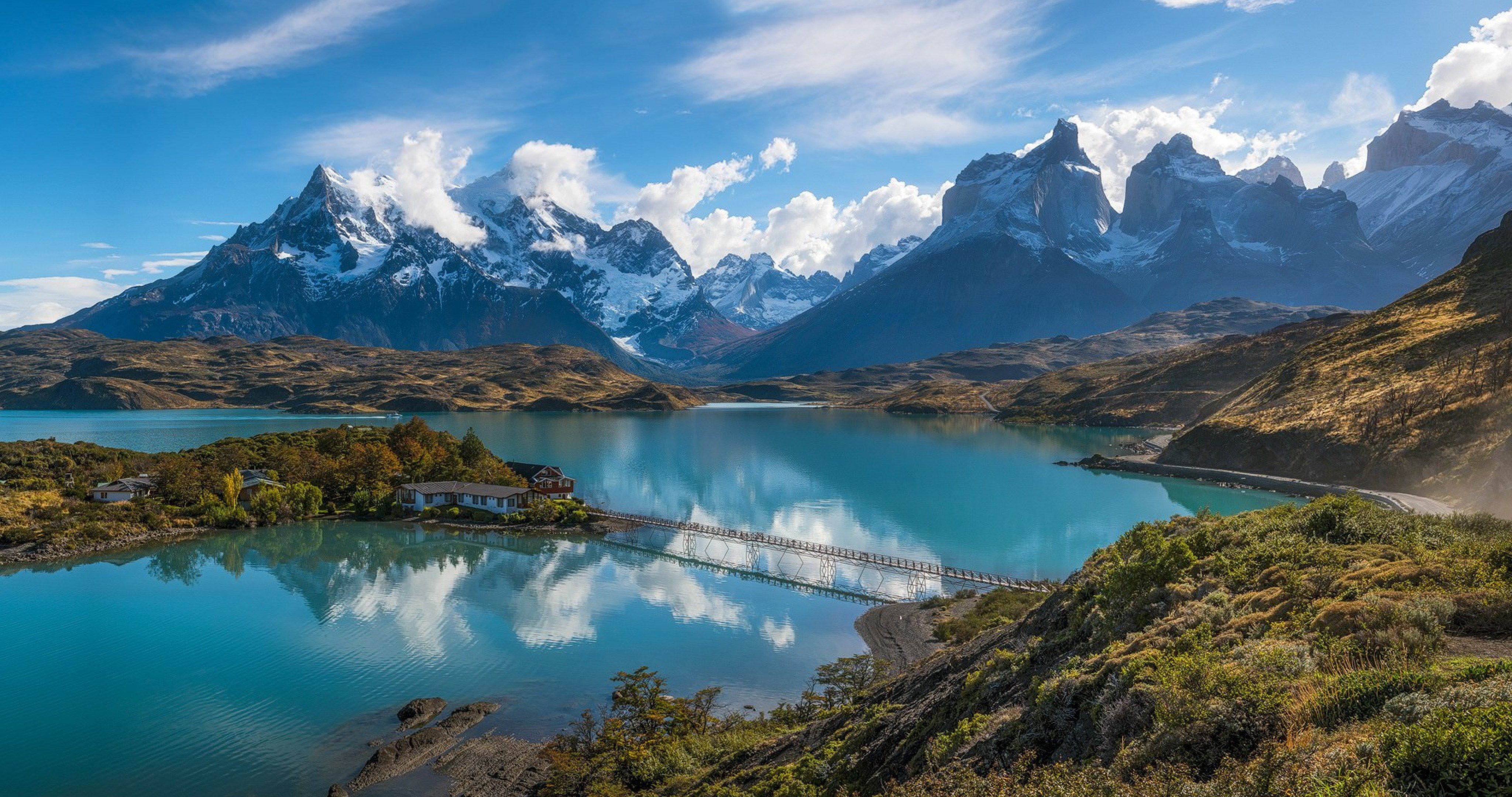The Andes Mountains, snaking majestically along the western edge of South America, hold the distinction of being the world's longest continental mountain range. Stretching an impressive 7,250 kilometers (4,500 miles), the Andes form a formidable natural barrier that shapes the continent's geography, climate, and the lives of the people who call it home. This colossal mountain chain is a realm of dramatic contrasts, harboring diverse landscapes, unique wildlife, and a rich cultural tapestry.
One of the most fascinating aspects of the Andes is the stark difference in climate between its eastern and western flanks. On the western side, the cold waters of the Humboldt Current create a hyper-arid desert, where rain is a rare visitor. The Atacama Desert, nestled in the rain shadow of the Andes, is considered one of the driest non-polar deserts on Earth. Here, the landscape is dominated by barren plains and towering sand dunes, a testament to the relentless power of the sun.
In stark contrast, the eastern slopes of the Andes are bathed in moisture-laden winds from the Amazon Basin. These winds condense as they rise over the mountains, creating a lush and vibrant cloud forest. This unique ecosystem thrives on the constant drizzle and mist, boasting an incredible diversity of plant and animal life. Towering trees draped in mosses and bromeliads create a green cathedral, where sunlight struggles to penetrate the dense foliage.
Llama Land: A History of Human-Animal Coexistence
For millennia, the Andes have been home to a rich indigenous culture. The Incas, perhaps the most well-known Andean civilization, developed a sophisticated society that thrived in this challenging environment. One of the key factors in their success was their close relationship with llamas. These hardy animals, perfectly adapted to the harsh Andean climate with their thick wool coats, have been a vital part of Andean life for centuries. Llamas provided not only wool for clothing and warmth but also meat and milk, making them a critical resource for the Inca people.
High Altitude
As you ascend the slopes of the Andes, the temperature drops dramatically. Air becomes thinner, making each breath a struggle. Yet, life persists in this harsh environment, with unique adaptations allowing creatures to thrive. The majestic Andean condor, the largest flying bird of prey in the world, soars effortlessly above the peaks. Its massive wings, with a span exceeding three meters, are perfectly designed for gliding on the updrafts that buffet the mountain slopes. Another fascinating inhabitant of the high Andes is the spectacled bear. Despite its name, this adorable creature doesn't wear spectacles! The name comes from the distinctive light markings around its eyes. Unlike most bears, the spectacled bear is primarily vegetarian, with a diet rich in fruits, bromeliads, and leaves.
Hummingbirds: Jewels of the High Andes
Among the most captivating creatures of the Andes are the hummingbirds. These tiny marvels of nature flit between flowers, their iridescent feathers shimmering like jewels. To maintain their body temperature in the chilly Andean air, these hummingbirds have the highest metabolic rate of any warm-blooded animal. Their tiny hearts beat an astounding 1,300 times per minute, a testament to their incredible adaptations.
The human history of the Andes is as rich and diverse as its landscapes. From the sophisticated engineering feats of the Incas, with their intricate network of roads and impressive stonework, to the vibrant traditions of present-day Andean communities, the region boasts a unique cultural heritage. Traditional music, weaving techniques passed down through generations, and a deep connection to the natural world are all integral parts of Andean life.
Tags:
Science

